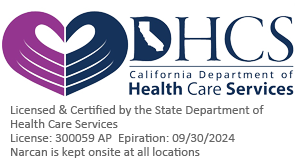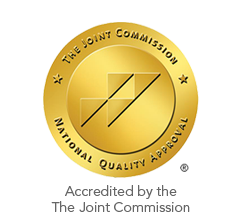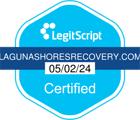Stimulants are a category of substances that encompasses amphetamines, cocaine, and methamphetamines, commonly referred to as meth. The Drug Enforcement Administration (DEA) categorizes stimulants as Schedule II substances, indicating a significant potential for abuse. Prescription amphetamines, for instance, play a crucial role in enhancing the quality of life for individuals diagnosed with attention-deficit/hyperactivity disorder (ADHD).
Medications such as Adderall and Ritalin assist these individuals in improving their capacity to maintain attention and focus on necessary tasks. However, when individuals without a diagnosed condition consume these substances, they experience heightened mental clarity, increased alertness, and a substantial surge in energy. Cocaine and methamphetamine can elicit similar effects, often accompanied by heightened self-confidence and feelings of euphoria. Additionally, stimulants are well-known for their appetite-suppressing properties, making them attractive to those seeking weight loss.
When individuals misuse stimulants to the point that it disrupts their daily functioning, they may have developed stimulant use disorder. Overcoming an addiction to stimulants can be exceedingly challenging without professional assistance, but fortunately, such support is readily accessible at Laguna Shores Recovery in Dana Point, California.
Are Crack and Cocaine the Same Thing?

At first glance, crack and cocaine might seem like two sides of the same coin. They both derive from the coca plant and produce similar brain and central nervous system stimulant effects. However, how they are processed and used and affect the body can vary dramatically. These differences not only impact how quickly addiction can develop but also influence the severity of health risks, psychological changes, and withdrawal symptoms.
Understanding the distinction between crack and cocaine is vital for individuals, families, and professionals working to combat substance use disorders. Educating yourself about both forms of this drug can help reduce stigma, encourage empathy, and support early intervention and long-term recovery.
What Is Crack Cocaine?
Crack cocaine, commonly referred to simply as “crack,” is a form of cocaine that has been processed with baking soda (sodium bicarbonate) and water. This mixture is then heated to remove the hydrochloride, resulting in a solid, rock-like substance that can be smoked. The characteristics of crack include:
- Typically sold in small, crystalline “rocks”
- Smoked rather than snorted or injected
- Produces an intense, immediate high that lasts around 5 to 10 minutes
- Often associated with low-income urban areas due to its lower cost compared to powdered cocaine
During the 1980s, crack cocaine use exploded in the United States, leading to what is now known as the “crack epidemic.” Communities, particularly in inner cities, were devastated as addiction rates soared and crime associated with drug trafficking escalated. This had a long-lasting impact on public health policy, law enforcement, and families affected by substance use.
Crack use is often marked by a binge-crash pattern, where individuals smoke repeatedly in an effort to sustain their high, leading to a vicious cycle of addiction.
Crack vs Cocaine: What Are the Differences?
While both crack and cocaine come from the same source, they have notable differences that significantly impact their effects on the brain, the user’s behavior, the methods of consumption, and the associated risks of developing a substance use disorder:
- Crack: Appears as off-white or tan rocks with a hard texture.
- Cocaine: Appears as a fine, white powder.
- Crack is smoked, typically using a glass pipe or improvised device.
- Cocaine is usually snorted but can also be injected or rubbed on the gums.
- Crack delivers an almost immediate high (10-15 seconds) that lasts 5-10 minutes.
- Cocaine’s high begins within minutes and can last 15-30 minutes when snorted.
- Crack is generally cheaper and often sold in smaller quantities.
- Cocaine is more expensive and considered a “luxury” drug in some circles.
- Crack is often more addictive due to its rapid and intense effects.
- Cocaine is also highly addictive, though the onset is slower.
- Crack: Rocks, base, hard
- Cocaine: Coke, blow, snow
Understanding these differences is important for prevention, harm reduction, and treatment planning, as it allows families, professionals, and individuals to make informed decisions, identify early warning signs of addiction, and take proactive steps toward recovery and support.
Signs and Symptoms of Stimulant Abuse
The signs and symptoms exhibited by individuals abusing stimulants can differ based on various factors. These factors may include the specific type of stimulant being misused, the length of time the abuse has occurred, and the frequency of use. Symptoms can be categorized as follows:

- No longer participating in activities that were enjoyed
- Changes in social interactions
- Engaging in dangerous activities to obtain one’s stimulant of choice
- Repetitive movements
- No longer fulfilling obligations at school, work, or home
- Hypervigilance
- Loss of interest in previously enjoyed activities
- Secretive behavior and frequent disappearances
- Lying, stealing, or manipulative behavior to obtain more drugs
- Noticeable weight loss and malnourishment
- Muscle weakness
- Chest pain
- Rapid heartbeat
- Nausea
- Vomiting
- Lowered or elevated blood pressure
- Dilated pupils
- Seizures
- Perspiration or chills
- Insomnia or erratic sleep patterns
- Nosebleeds (cocaine snorting)
- Burn marks on lips or fingers (crack smoking)
- Muscle twitches or tics
- Psychological distress
- Lack of emotional reactivity
- Anger
- Anxiety
- Brief periods of euphoria
- Heightened anxiety or panic attacks
- Grandiosity or inflated self-esteem
- Paranoia or delusional thinking
- Difficulty concentrating or completing tasks
When these signs appear, it may be time to seek professional support from a qualified treatment center, counselor, or healthcare provider who can assess the situation, provide guidance, and offer evidence-based interventions tailored to the individual’s needs.
Side Effects of Crack vs Cocaine
The presence of stimulant abuse in an individual’s life renders them susceptible to a range of adverse effects. The particular consequences that manifest will differ based on the specific stimulant utilized, the method of administration, the duration of use, and the frequency of consumption. Both crack vs cocaine cause significant physical and psychological effects, although crack tends to cause intense symptoms more rapidly.
Common Side Effects of Cocaine Abuse
- Euphoria
- Increased energy
- Alertness
- Talkativeness
- Decreased appetite
- Dilated pupils
- Dry mouth
Common Side Effects of Crack Abuse
- Intense euphoria and a sense of invincibility
- Hyperactivity or manic behavior
- Increased risk of aggressive or impulsive behavior
- Hallucinations and severe paranoia
- Chest pain and shortness of breath
Short-Term Risks of Crack vs Cocaine Abuse
Due to its method of consumption through smoking, crack cocaine produces effects that are more rapid and pronounced compared to powdered cocaine. Short-term side effects include:
- Loss of appetite
- Elevated heart rate
- Increased blood pressure and body temperature
- Constricted blood vessels
- Accelerated breathing
- Dilated pupils
- Disrupted sleep patterns
- Nausea
- Heightened stimulation
- Erratic and sometimes aggressive behavior
- Hallucinations
- Increased irritability
- Tactile hallucinations that create the sensation of insects crawling under the skin
- Profound euphoria
- Feelings of anxiety and paranoia
- Depression, intense cravings for the drug
- The risk of convulsions, seizures, and potential fatality from high doses, even after a single use
Long-Term Risks of Crack vs Cocaine Abuse
In addition to the typical risks linked to crack and cocaine consumption, individuals who use crack may face significant respiratory issues, such as persistent coughing, difficulty breathing, lung damage, and bleeding. Prolonged use of crack cocaine can lead to severe harm to the heart, liver, and kidneys, and users are at a higher risk of contracting infectious diseases. Continuous daily consumption results in sleep deprivation and diminished appetite, leading to malnutrition.
Additionally, smoking crack cocaine can provoke aggressive and paranoid behaviors. As crack cocaine disrupts the brain’s chemical processing, users often require increasing amounts of the drug to achieve a sense of normalcy. Those who develop an addiction to crack cocaine, similar to many other substances, tend to lose interest in various aspects of their lives.
- Permanent damage to blood vessels of the ear and brain, high blood pressure, leading to heart attacks, strokes, and death
- Liver, kidney, and lung damage
- Severe chest pains
- Respiratory failure
- Infectious diseases and abscesses, if injected
- Malnutrition, weight loss
- Severe tooth decay and skin lesions
- Auditory and tactile hallucinations
- Sexual problems, reproductive damage, and infertility (for both men and women)
- Disorientation, apathy, and confused exhaustion
- Irritability and mood disturbances
- Increased frequency of risky behavior
- Delirium or psychosis
- Severe depression
- Tolerance and addiction (even after just one use)
Chronic use of either substance can devastate an individual’s personal and professional life, leading to job loss, strained relationships, legal issues, financial hardship, and a severe decline in mental and physical health that becomes harder to reverse over time.
Is Crack More Addictive Than Cocaine?
Both crack vs cocaine are highly addictive, but crack is considered more addictive for several reasons:
- Rapid Onset: Smoking crack floods the brain with dopamine almost instantly, reinforcing drug-seeking behavior faster than snorting powdered cocaine.
- Short High: The brief euphoria leaves users chasing the next high repeatedly.
- Craving Intensity: Crack produces a more intense and urgent craving for repeated use, contributing to binge cycles.
- Real-World Example: Many individuals struggling with crack addiction describe being “hooked” after their first or second experience. This is in contrast to powdered cocaine, where the development of addiction may take a few more uses.
Cocaine Dependence and Withdrawal
Cocaine and crack withdrawal can be brutal, particularly in the first days following cessation. Unlike opioids or alcohol, stimulant withdrawal rarely causes physical symptoms like vomiting or tremors, but the psychological toll can be overwhelming.
Stimulant Withdrawal Symptoms & Timeline
When individuals stop using stimulants or substantially decrease their intake, they are likely to undergo a challenging withdrawal phase as their bodies adjust to the absence of the substance. The danger of overdose is a significant concern for individuals caught in a pattern of substance abuse.
An overdose happens when a person consumes a quantity of a substance that exceeds their body’s ability to process it. As the amount consumed rises or the frequency of use intensifies, the likelihood of an overdose also increases. In the event of an overdose, it is crucial to seek emergency medical assistance without delay. Below illustrates the withdrawal timeline of stimulant abuse.
- Fatigue
- Depression and suicidal thoughts
- Intense cravings
- Hypersomnia (excessive sleeping)
- Irritability
- Anxiety
- Difficulty focusing
- Mood swings
- Lack of motivation
- Lingering depression or anhedonia (inability to feel pleasure)
- Recurrent drug dreams
- Cravings during stress or exposure to triggers
Support Tip: Because of the emotional crash that comes with stimulant withdrawal, behavioral therapy and supportive environments are essential to reduce relapse risk.
Cocaine Addiction Treatment
Treatment for cocaine addiction must be tailored and multidimensional to address the complex physical, emotional, and psychological aspects of substance use. No two people experience addiction the same way, and recovery should be as individualized as the people it serves, taking into account personal history, co-occurring conditions, lifestyle factors, and support networks to maximize success.
- Medically Supervised Detox: Helps stabilize individuals and manage withdrawal symptoms in a safe environment.
- Cognitive Behavioral Therapy (CBT): Teaches individuals to challenge and change unhelpful thoughts.
- Motivational Interviewing: Strengthens commitment to sobriety by addressing ambivalence.
- Contingency Management: Offers tangible rewards for maintaining sobriety milestones.
- Dual Diagnosis Treatment: Since many cocaine users also suffer from mental health conditions, treating both simultaneously is key.
- Group Therapy and Peer Support: Provides community, accountability, and encouragement. Recovery doesn’t happen in isolation.
- Holistic Therapies: Yoga, mindfulness, nutrition, and exercise can aid emotional regulation and brain recovery.
- Aftercare Planning: Relapse prevention strategies, alumni programs, sober living, and therapy ensure continued support.
Individuals facing stimulant use disorder frequently encounter concurrent mental health issues. Furthermore, they are at a heightened risk of misusing other substances.
The American Psychiatric Association indicates that the most frequently abused substances among those addicted to stimulants are sedatives, likely due to their ability to mitigate some of the distressing effects associated with stimulant misuse. Examples of disorders that may co-occur with stimulant use disorder include:
- Alcohol use disorder
- Post-traumatic stress disorder (PTSD),
- Attention-deficit/hyperactivity disorder (ADHD)
- Schizophrenia
- Bipolar disorder
- Antisocial personality disorder
Dual diagnosis treatment can help treat both mental health conditions at the same time for the best treatment outcomes.

Break the Cycle of Addiction at Laguna Shores Recovery
Cocaine and crack addiction can trap even the strongest people in patterns of pain, secrecy, and despair, stripping away hope, stability, and connection over time. But there is a way out. With compassionate, expert care rooted in evidence-based practices and genuine human connection, healing is not only possible – it’s probable and well within reach.
At Laguna Shores Recovery in Dana Point, CA, our programs are designed to meet clients where they are emotionally, mentally, and physically, offering individualized care plans that evolve as healing progresses. Whether you or a loved one is struggling with crack or cocaine addiction, we can help you reclaim your health, restore your joy, rebuild your relationships, and reconnect with the life you were meant to live.
Don’t wait another day in the cycle of addiction. Contact us today! Reach out to Laguna Shores Recovery and begin your transformation today, because freedom starts with one brave step.
- National Institute on Drug Abuse. (2022). Cocaine Research Report.
- American Addiction Centers. (2022). Cocaine Addiction and Abuse.
- Substance Abuse and Mental Health Services Administration (SAMHSA)

 Matthew Beck B.A, M.A, LMFT
Matthew Beck B.A, M.A, LMFT 


